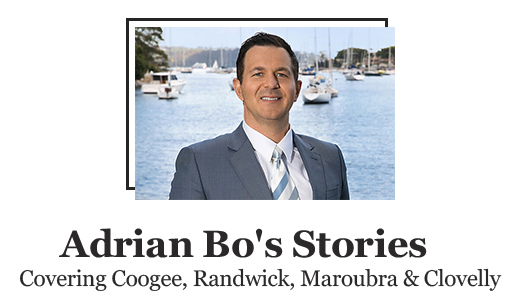Coogee Beach
Coogee said a final goodbye to an amazing piece of it’s history this month.
Adrian talks about the extraordinary structure that once sat on Coogee Beach.
Welcome. It’s Adrian Bo, from Ray White Park Coast Eastern Suburbs, and today I’m opposite the former site of the Coogee Pier to talk about this very significant facility that once dominated Coogee Beach and just recently came back to remind or even haunt locals, if you like, about it’s incredible story. Despite being demolished in 1934, the concrete stumps of the Coogee Pier were left behind, buried below the sand. And a few weeks ago, council decided to remove the pylon stumps. The 12 concrete and timber pylons had become exposed. Recent floods had eroded the sand as had happened several times after heavy swells over the years, and the pylons were deemed a hazard for swimmers. So the removal took place a couple of weeks ago. The Coogee Pleasure Pier took four years to build, having started construction in 1924 by a private company called the Coogee Ocean Pier Company, who raised a quarter of a million dollars for the project at the time inspired by the Brighton Pier in England.
The construction was blighted by numerous delays due to disputes between the builder and Randwick CC. The pier stretched 180 metres, well into the Pacific Ocean and included a 1400 seat theatre, a ballroom with a capacity for over 600 people, and a 400 seat restaurant, and penny arcade. In that era, dancing was very popular, and the pier regularly held concerts. A steel mesh shark net was also installed, attached to one of the pylons, and stretching halfway across the bay. This led to floodlit night surfing, which attracted nighttime crowds of over 30,000 people to the beach for several years. I covered this story of how the net was conceived and built by a local council worker in a previous episode on my videos. The structure, however, despite promises from the builders that it would be indestructible, suffered severe damage whenever there was a large swell. The economic depression also led to declining patronage, so it was decided to demolish the pier structure in 1934. The steel mesh shark net was demolished during WW2. Just before demolition, the derelict remains of the pier were sold off for only 2800 pounds.
The council’s removal of the remnants of the pier was met with plenty of local pushback recently. But while the pylons were moved to their depot, there is discussion now of having them on display somewhere on the beach to commemorate this iconic structure, which is a great idea. In fact, a couple of suggestions for their use, in the press recently, included creating a Stonehenge type display or using them to create a memorial for Coogee legend, Richie Benaud. By the way, over the last 12 months, there have been 314 property sales in Coogee, and 168 of them were two bedroom units, which had a substantial rise in median price of 19.9% over the last 12 months. That’s $1.409 million. Three bedroom units also rose by 23.3% up to $2,220,000. If you’d like an appraisal of your property, I’d be delighted to help. You can reach me at 0418 278 316. The story of the Coogee Pier is a great reminder of how that era was desperate for entertainment. People travelled far and wide to come to the Coogee Pier, as well as attend that night surfing. I hope it’s important to you, as I retain these historical stories. Keep smiling, and always remember your home is worth more with Adrian Bo.


